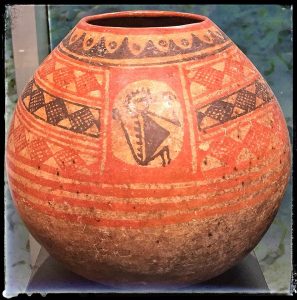1. Monte Alban
Monte Alban was once the ancient capital of the Zapotec people. Overlooking the Valley of Oaxaca, Monte Alban is one of the top archeological sites in Mexico. There are spectacular views over the valley!
 2. National Museum of Anthropology
2. National Museum of Anthropology
The Museo Nacional de Antropología is both the largest and most visited museum in all of Mexico. Located in Mexico City’s Chapultepec Park, the museum boasts an enormous collection of artifacts and exhibits relating to the pre-Columbian heritage of the country. This includes Mayan and Aztec pieces, such as the famed Stone of the Sun, which is the original Aztec calendar stone.
3. Copper Canyon
The Copper Canyon network of canyons is several times larger than the Grand Canyon. In the 1600s, the Spanish enslaved some of the indigenous Tarahumanas to extract precious minerals, but the Copper Canyon is better known for its scenic glories. The path of the Chihuahua al Pacifico Railway includes 37 bridges, 86 tunnels, and spectacular views from as high as 2400 meters (nearly 8000 feet).
4. Museo de la Memoria y Tolerancia
In addition to explaining how Mexico City’s Jewish population burgeoned during the mid-20th century, and memorializing the Holocaust, the museum features permanent exhibits documenting genocides that have occurred elsewhere, including Latin America and Africa.
In the 16th century, the Augustinians, Franciscans, and Domincans built fourteen monasteries on the slopes of the Popocatépetl volcano in central Mexico. The goal was to evangelize the indigenous groups living in the areas south and east of Popocatépetl; the monasteries are open to visitors.
Written by Jane Bauer

